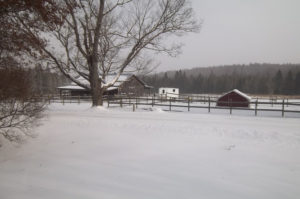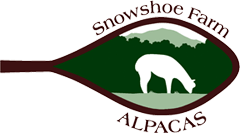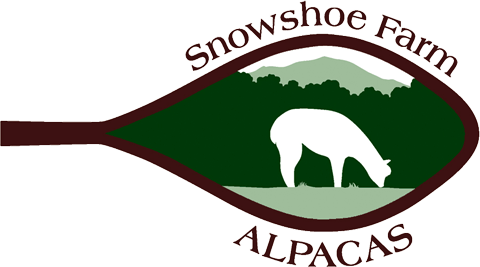 No alpacas in the pastures this morning! Up until now, they’ve been spending their days grazing on what little green was left in the fields and seemed to be very comfortable with the mostly dry, but cold weather we’ve been having.
No alpacas in the pastures this morning! Up until now, they’ve been spending their days grazing on what little green was left in the fields and seemed to be very comfortable with the mostly dry, but cold weather we’ve been having.
But this morning, we woke to 6 degrees, snow and high winds. Not entirely unusual, but a little more wintry than we like for late November. And the alpacas seem to have decided to hunker down in their barns and around their hay feeders. It feels to me like winter is here to stay.
People often ask how the alpacas do in the cold, whether or not we heat the barns in winter, etc. Fortunately, our Vermont winters are not a problem for our herd. It can be pretty inconvenient for us and a lot of physical work when you have to shovel through feet of snow to get to a barn or chip away at frozen piles of poop. But the alpacas, with inches-thick coats of very warm fleece get through the wildest winter weather without much trouble.
In winter, we switch out our regular hanging water buckets for heated buckets. We always – year ’round – keep the feeders full of second cut hay, but they need to be refilled more often in winter when that is their sole food supply. On days that are not too windy, we put hay in the paddocks so the alpacas get out in the daylight. And we keep the barn doors closed down more tightly. Blocking the wind is a key element in helping the alpacas stay comfortable in freezing temps.
Keeping ourselves bundled up enough to stay outside for hours, yet flexible enough to do barn chores can be a challenge. Especially in that weather known as a “wintry mix”. Ugh! Temps that hover close to freezing give us wet sloppy snow and slush that freeze up later and coat all surfaces with ice. Give us good cold temps and light, dry snow any day! And no wind!

